Best drum mic kits 2025: Our pick of percussion-friendly microphones for every budget
Our guide to the finest do-it-all drum mic solutions will help you to find the perfect fit for your set-up
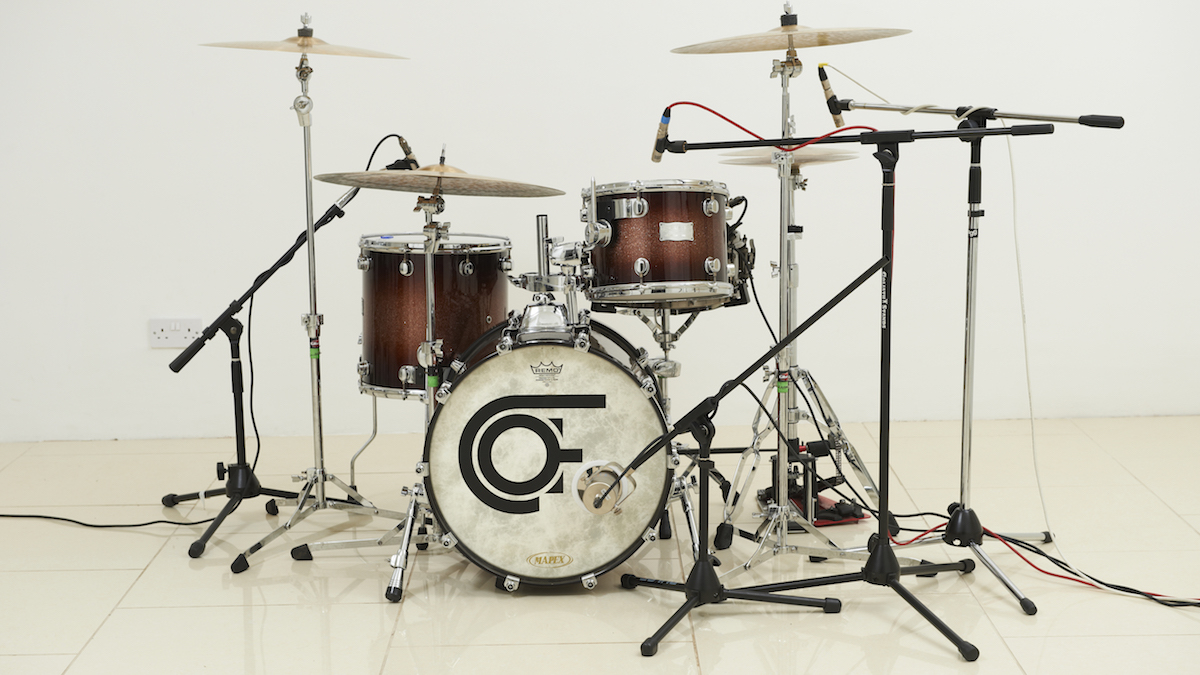
1. The quick list
2. Best for usability
3. Best budget
4. Best premium option
5. Best industry standard setup
6. Best for flexibility
7. Best minimalist setup
8. Best for live use
9. Best close mics
10. Buying advice
11. How we choose products
What’s the best type of studio microphone to use for drums? The one in your hand, goes the old saying. But, as you’re probably aware, drum kits produce an extremely wide-ranging set of frequencies, from very low to very high. Add in the fact that your kit is a collection of single drums – usually requiring their own individual mics – and suddenly the cost of that studio classic mic you’ve been eyeing up is multiplied. That’s where the best drum mic kits come in.
While these kits aren’t always compiled with budget in mind, buying a set of mics to cover your whole kit will often save you money. Not only that, these sets will save you the hassle of having to select mics for each part of your kit. So, whether you’re looking for the best drum mic sets for recording or performing live, take a look at our tried and tested favourite options below. We’ve included some buying advice in this guide too.
The quick list
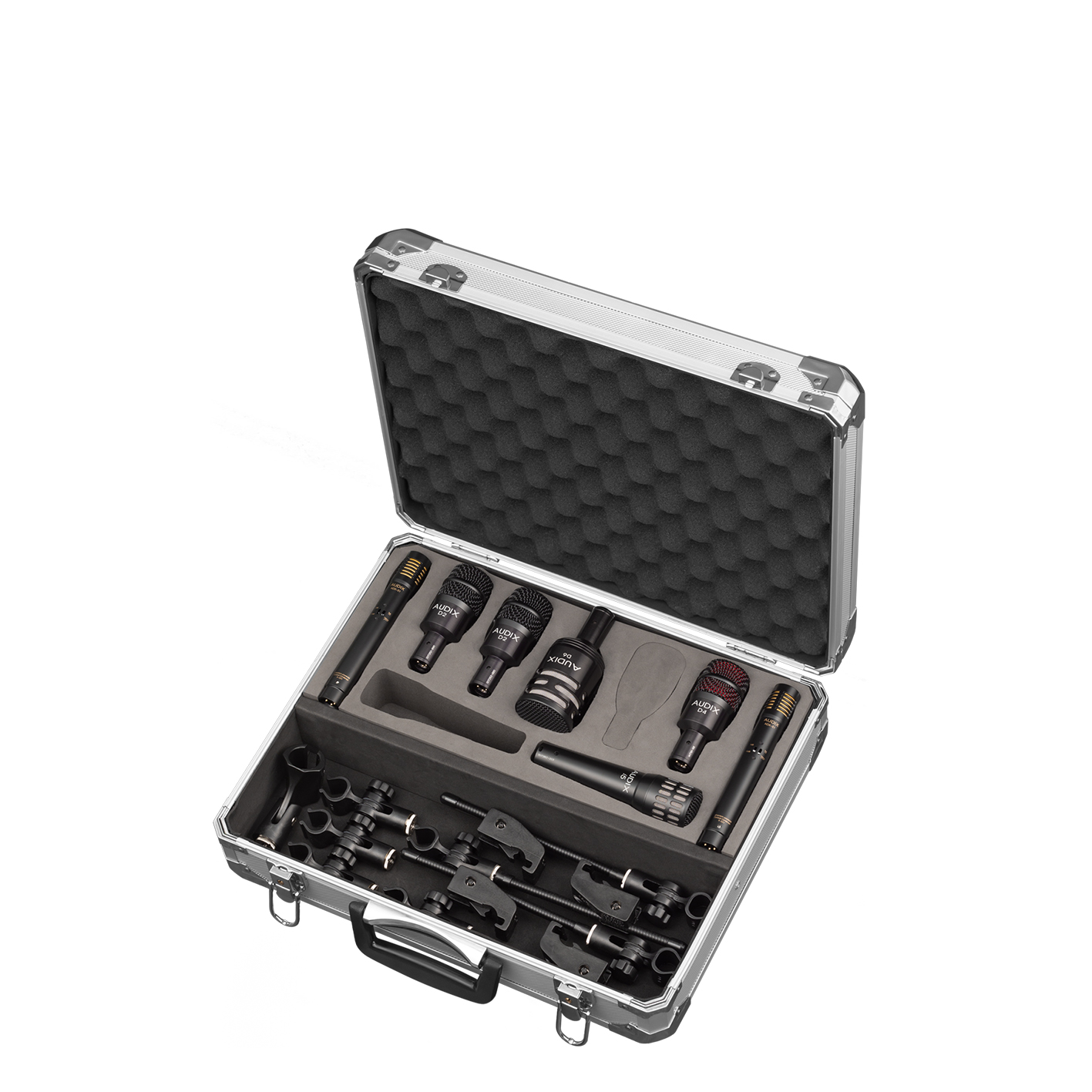
Audix’s voicing may not be the best for vintage sounds, but there’s still a lot of versatility on offer, and as a straightforward, fast miking solution for achieving great modern pop, rock and metal sounds straight out of the box – both live and in the studio – the DP7 is hard to beat.
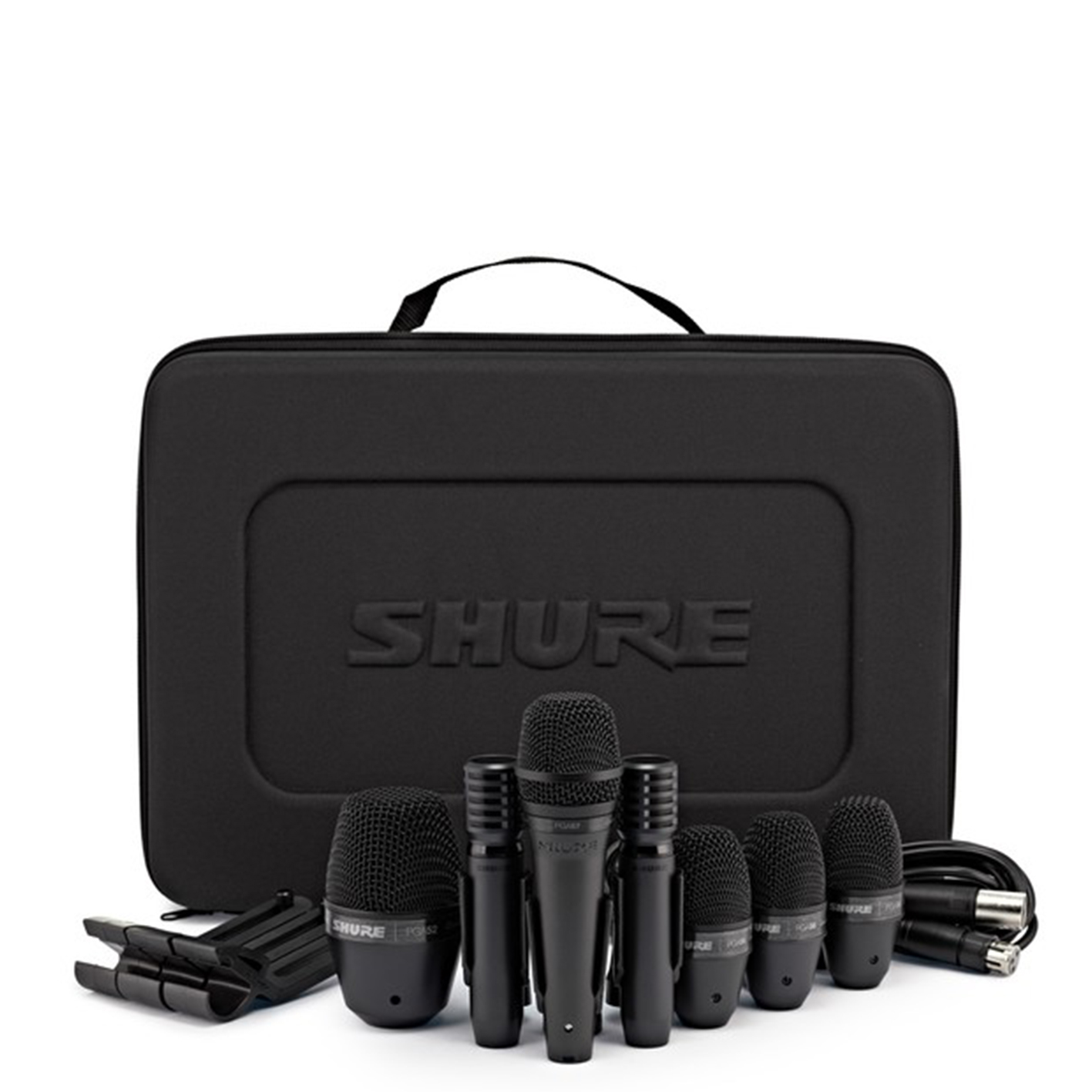
Shure's PG ALTA series of affordable mics is popular with live drummers who have a smaller budget. With seven of these included in the PGADRUMKIT7, there’s enough for a five-piece kit with overheads, making it an excellent-value pack that gives you everything you need.
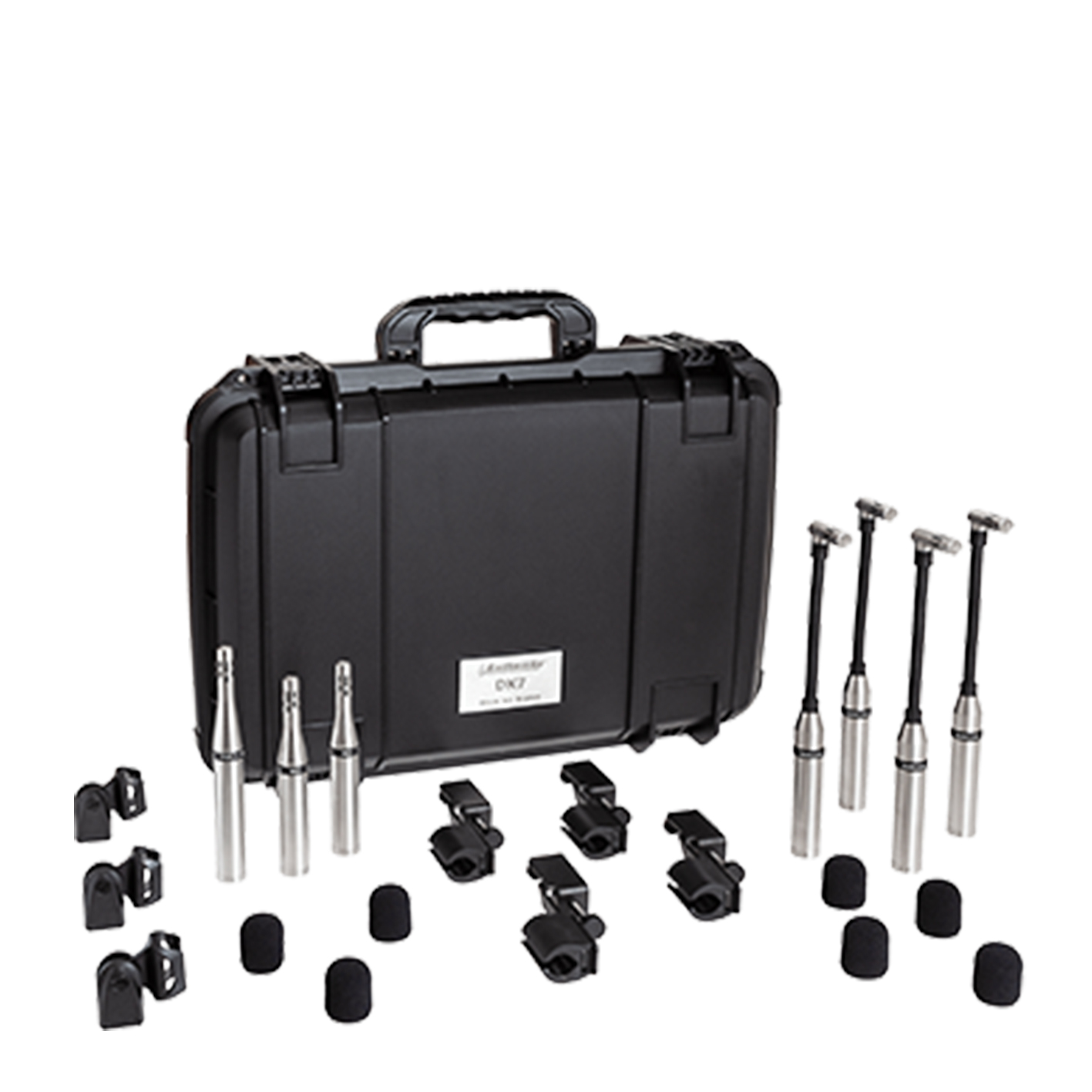
If price isn’t an issue for you, then the Earthworks DK7 is a top choice. The name of the game here is quality, with Earthworks focusing on rejection of the sounds you don’t want to capture, while maintaining absolute fidelity in the ones you do. It’s a high-end investment, but one that will pay off over the years.
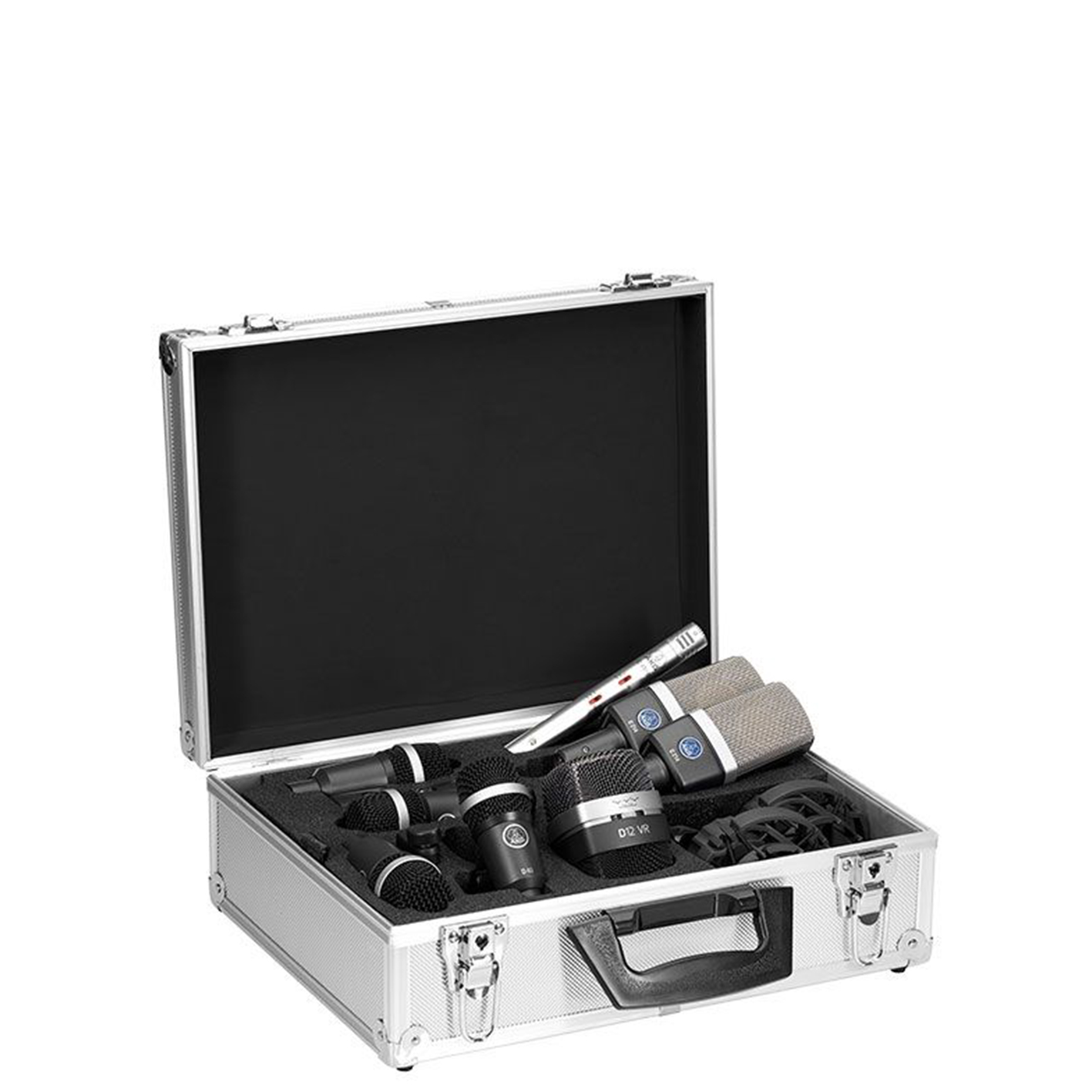
You can’t talk about drum mics without mentioning AKG – the manufacturer practically invented the format with its D12 and D112 bass drum mics. AKG does make more affordable drum mic kits, but the Drum Set Premium delivers so many industry standards in one box, it’s a no-brainer for live and recording applications.
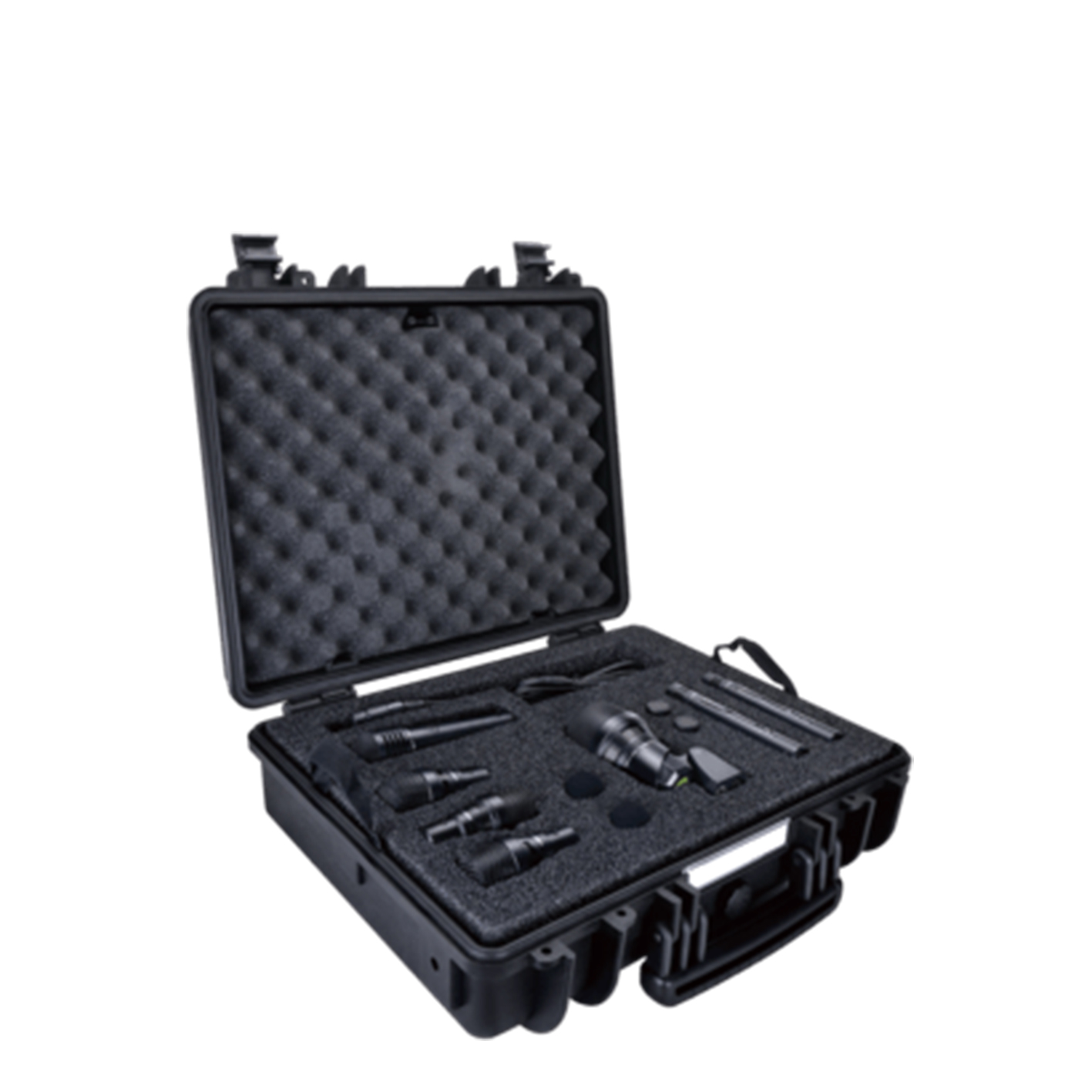
The Beatkit Pro includes the DTP 640 REX bass drum mic which gives you the best of two microphone types - dynamic and condenser - simultaneously for maximum attack and body. It also features switchable voicings, enabling you to dial-in your bass drum sound before you even get to the mixer.
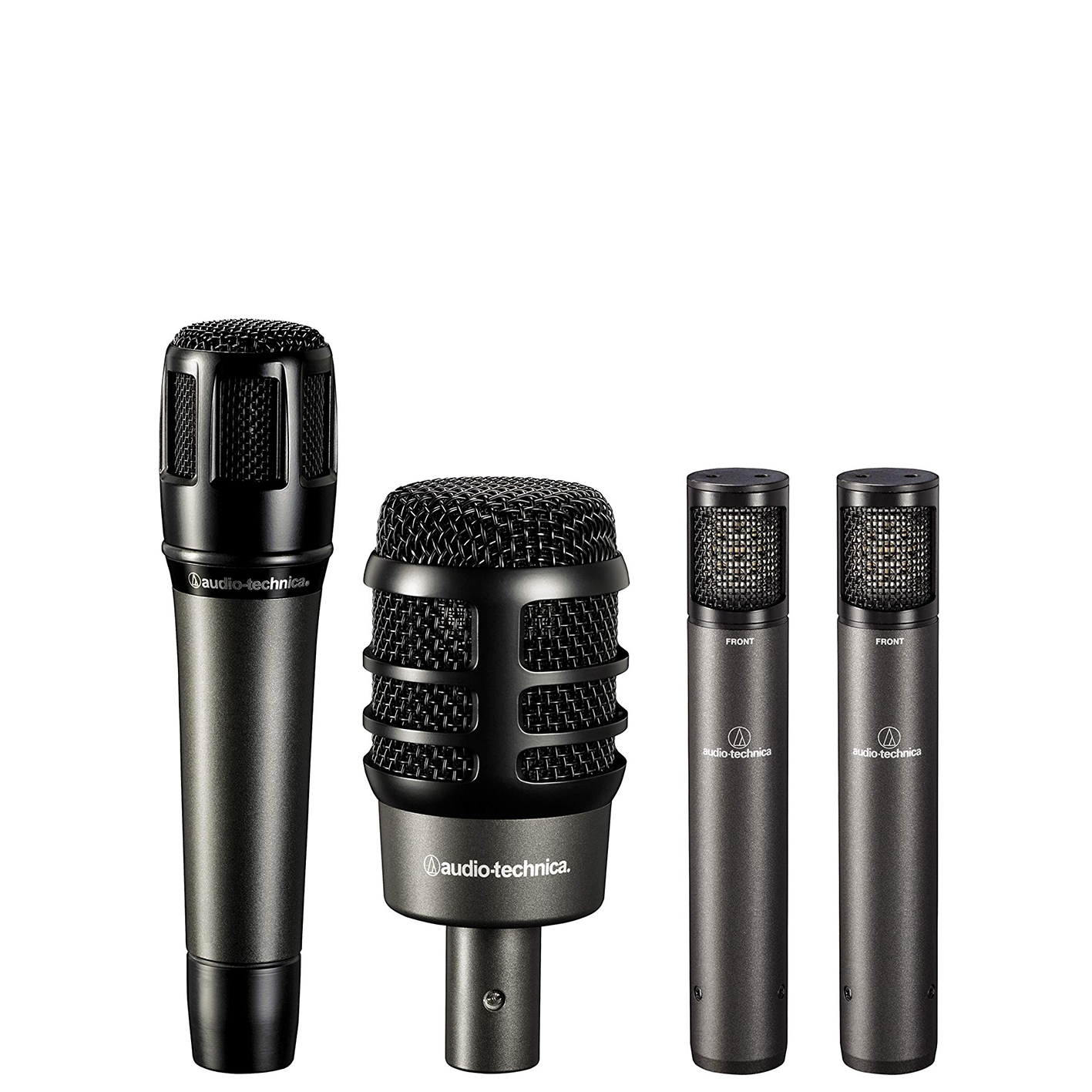
The Audio-Technica ATM-DRUM4 has you covered with dynamic mics for your kick and snare, plus two pencil condensers for overheads. If you want some basic reinforcement live, or in the recording studio when you’re going for a more natural sound, this is more than enough.
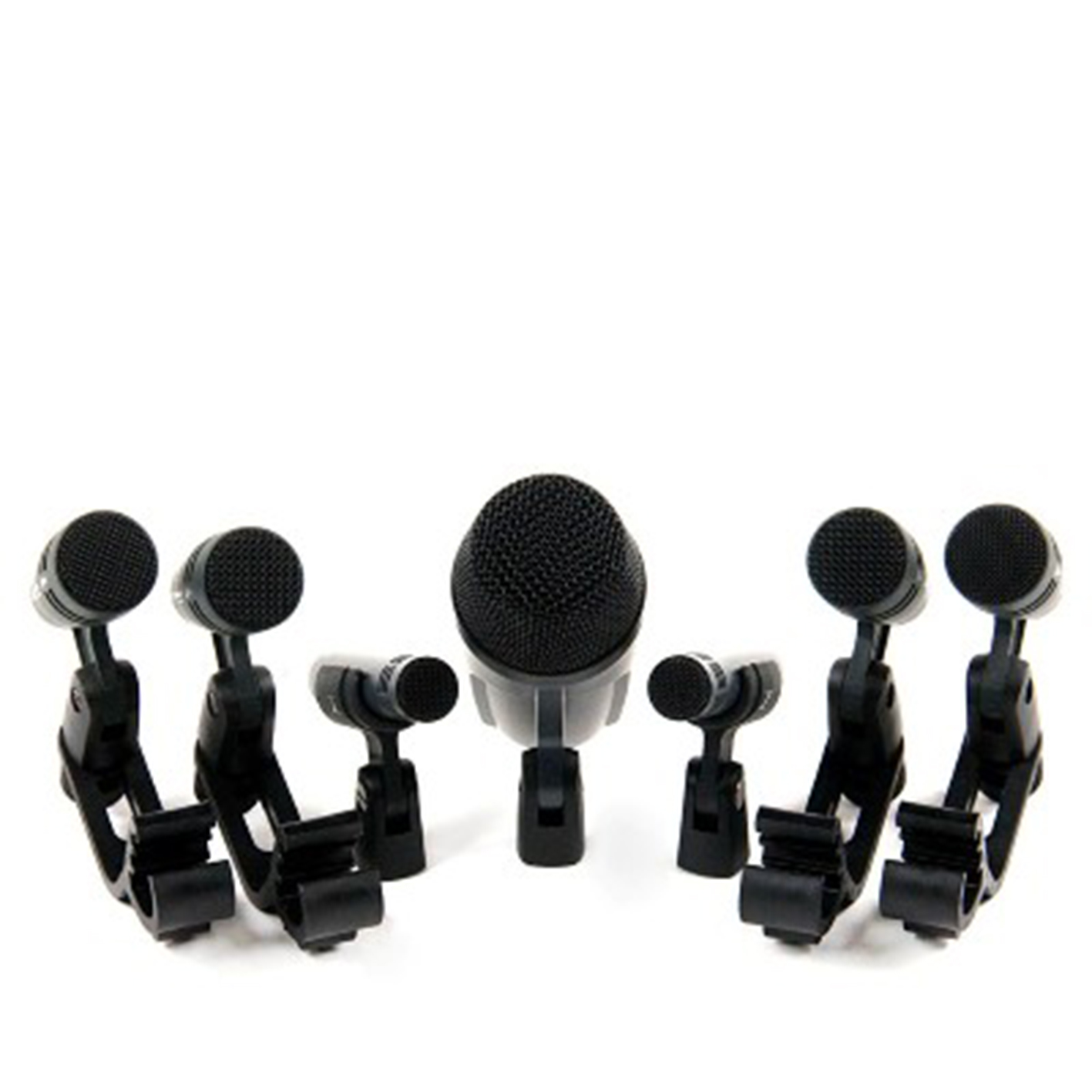
If you’ve ever had your kit miked in a live setting, there’s a strong chance you’ll be familiar with Sennheiser’s e 604s. These stubby dynamic mics are a favourite among drummers who want to nail that ‘live’ sound, thanks to their ease of placement around the kit and full frequency response.
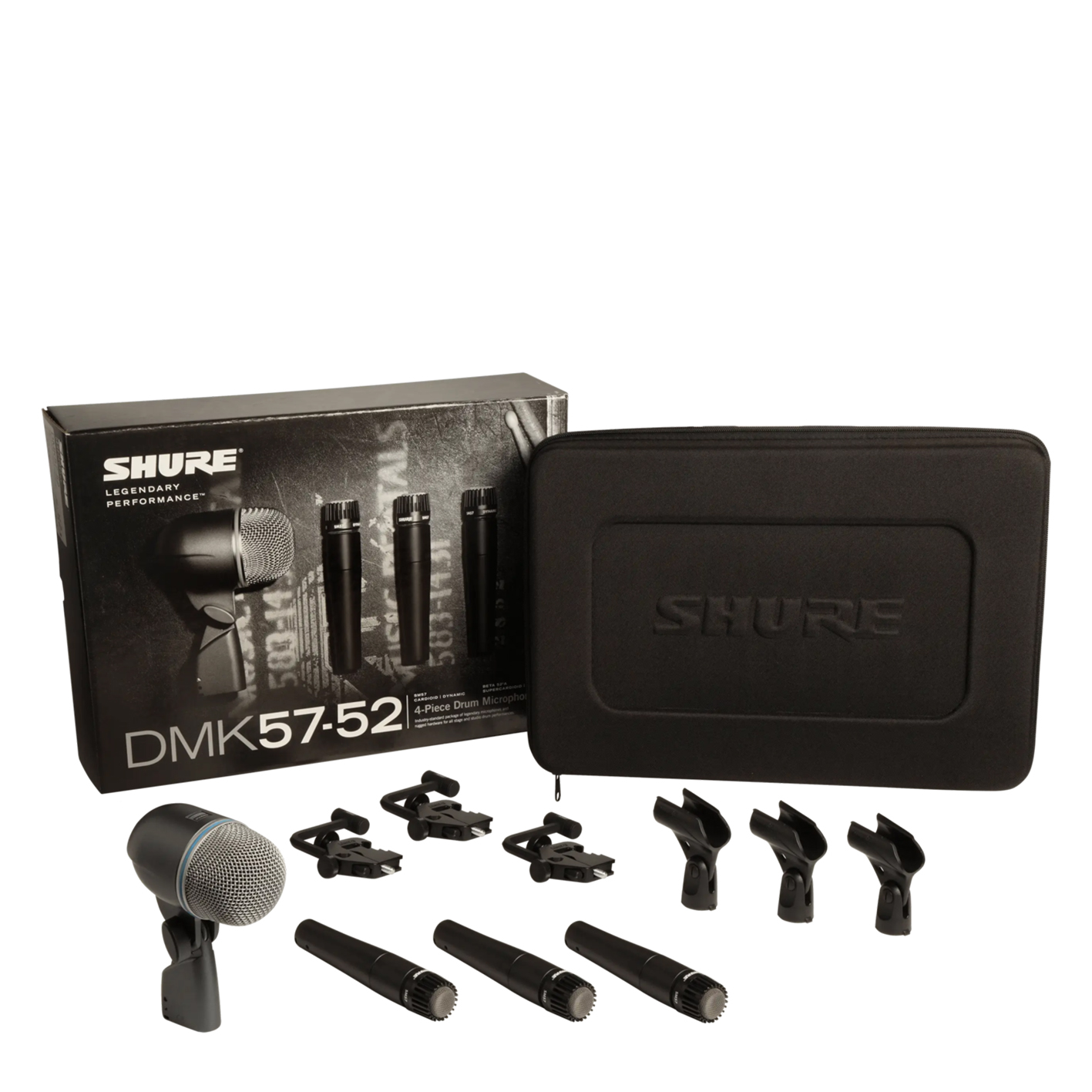
Want to mic a snare drum? Toms? How about defending yourself from the bass player? The answer is the same: use an SM57. Shure’s DMK57-52 pack is slightly different to some of the others here, in that it doesn’t include overheads. It does, however, comprise three SM57s and Shure’s excellent BETA 52A bass drum mic.
Best for ease of use
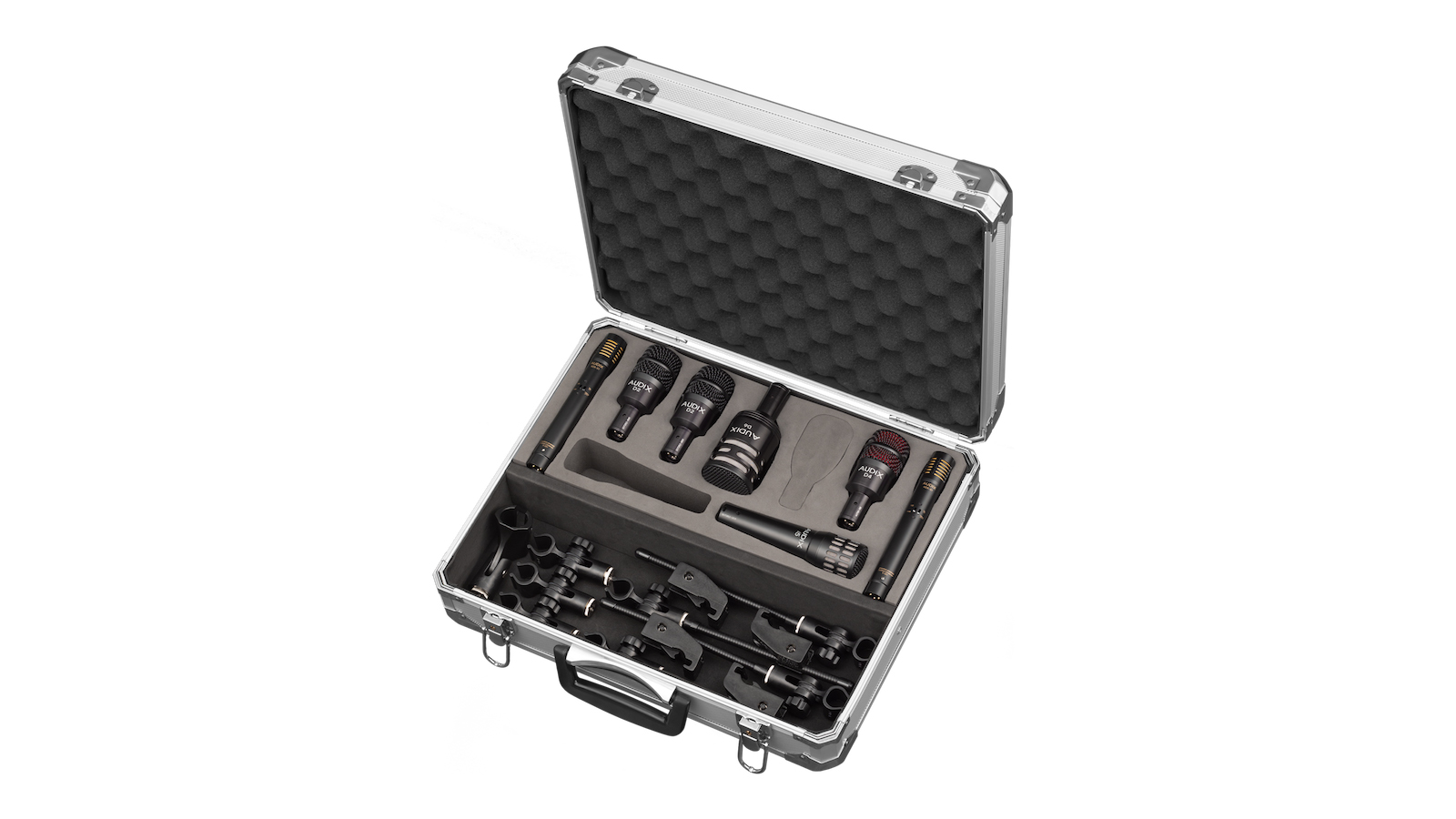
1. Audix DP7
Specifications
Reasons to buy
Reasons to avoid
Audix is famous for its ‘pre-EQ’d’ drum sounds, which cut some of the muddier frequencies our drum kits produce, while accentuating the areas that are home to punch, cut and sizzle.
The DP7 kit continues this theme with an array of Audix’s D-series microphones. There’s a D6 for bass drum, two D2s and a D4 for rack and floor toms, an i5 – arguably one of the best alternatives to Shure’s SM57 – for snare, and a pair of ADX51 condenser mics for use as overheads.
Some people prefer the versatility of a flatter frequency response, and Audix’s voicing may not be the best for vintage sounds. But there’s still a lot of versatility on offer, and as a straightforward, fast miking solution for achieving great modern pop, rock and metal sounds straight out of the box – both live and in the studio – the DP7 is hard to beat.
Read the full Audix DP7 review
Best on a budget
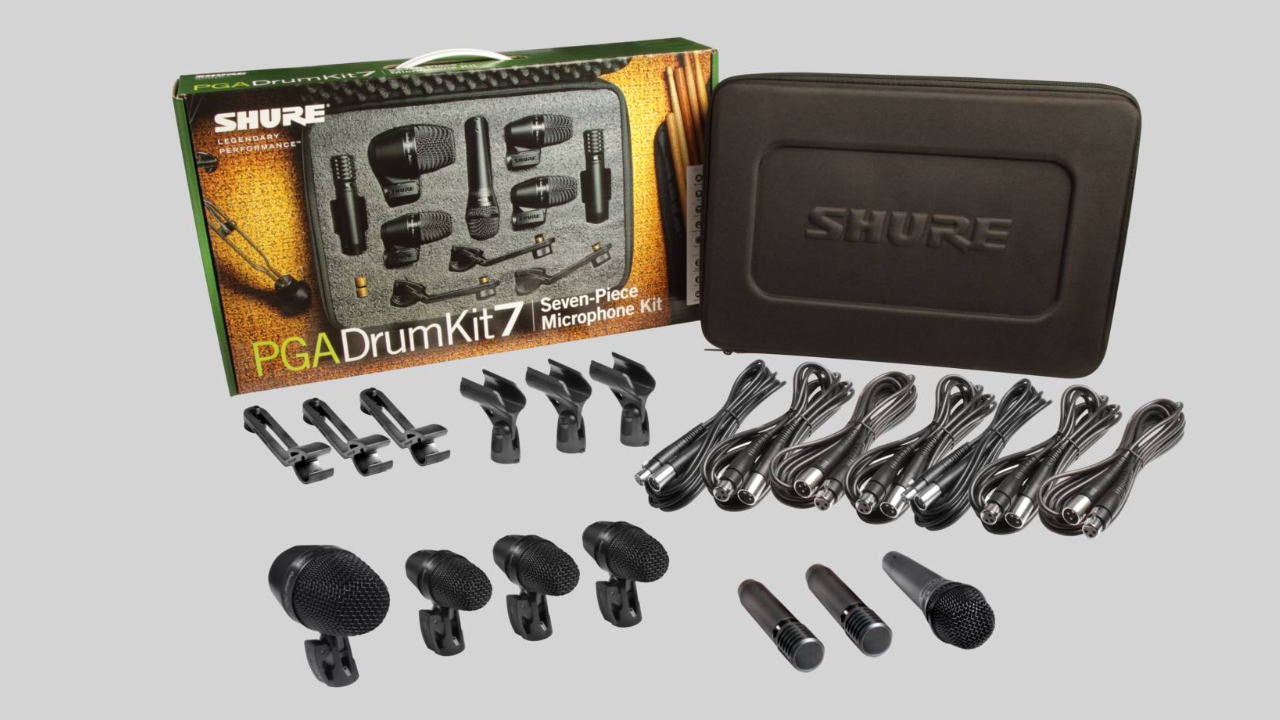
2. Shure PGADRUMKIT7
Our expert review:
Specifications
Reasons to buy
Shure’s PG ALTA series of affordable mics is popular with live drummers who have a smaller budget. With seven of these included in the PGADRUMKIT7, there’s enough for a five-piece kit with overheads.
PG ALTA series mics consolidate Shure’s reputation for tour-tough build quality, and allow for accurate placement without getting in the way. Plus, they sound great! They’re based on familiar Shure numberings – so, the PGADRUMKIT7 comes with a PGA57 (snare), a PGA52 (bass drum), 2 x PGA81 condenser mics and three PGA56 tom mics. The tom mics mount to the drum using the included rim mounts, while the PGA52 features its own built-in clip. Clips for the other three mics are included, and Shure has even thrown in seven XLR cables.
It’s an excellent-value pack that gives you everything you need.
Best premium option
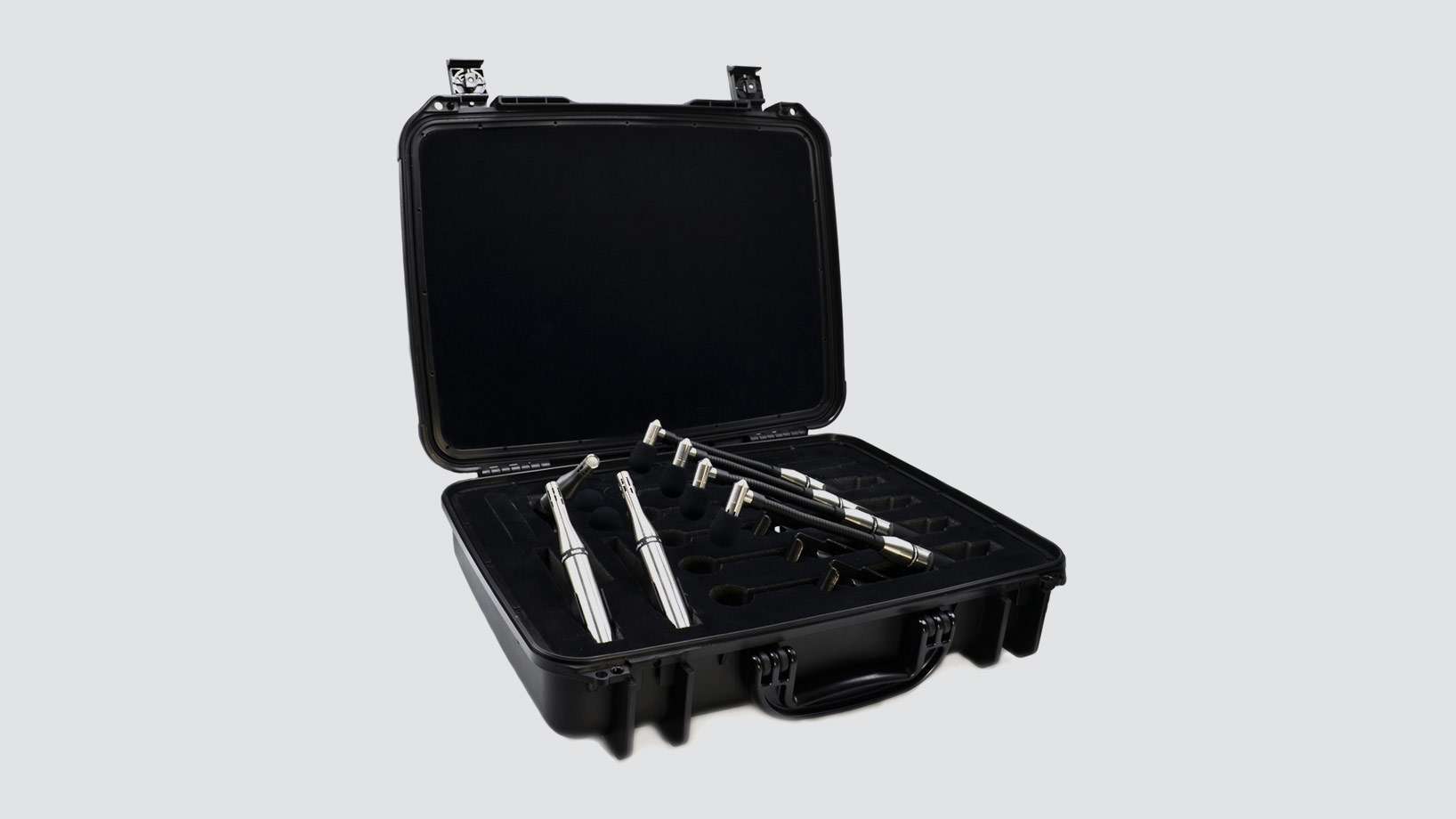
3. Earthworks DK7
Our expert review:
Specifications
Reasons to buy
Reasons to avoid
If price isn’t an issue for you, then the Earthworks DK7 is a top choice. The microphones within resemble the instruments you might find in a surgical environment, and deliver sonic quality at the same level of detail.
In the pack, you get 4x DM20s (snare/toms), 2x SR25mp overhead mics and an SR20LS. The DM20s clamp to your drum rim, the integral gooseneck enabling you to get precise placement without the need for external stands.
The name of the game here is quality, with Earthworks focusing on rejection of the sounds you don’t want to capture, while maintaining absolute fidelity in the ones you do. It’s a high-end investment, but one that will pay off over the years.
Best for industry standard
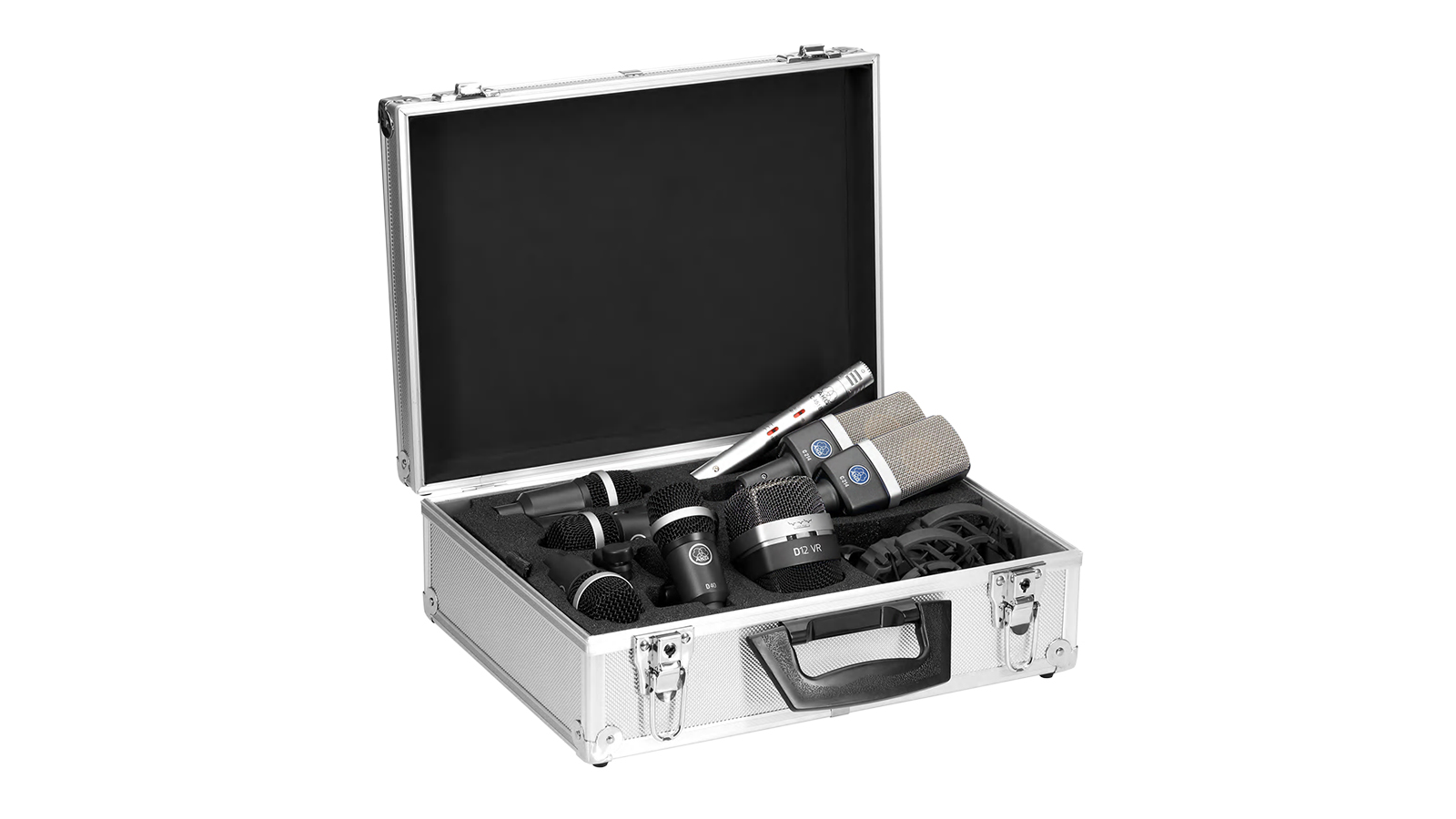
4. AKG Drum Set Premium
Our expert review:
Specifications
Reasons to buy
Reasons to avoid
You can’t talk about drum mics without mentioning AKG – the manufacturer practically invented the format with its D12 and D112 bass drum mics. In the Drum Set Premium, you get AKG’s current iteration of the D12 – the D12 VR – as well as four D40 dynamic mics for your snare/toms, a pair of C214 large diaphragm condensers, and a C451 B condenser as a dedicated hi-hat mic.
The D12 VR is dynamic but features active circuitry for its voice-switching circuit, so phantom power will be needed to make use of this. If you don’t have it, the mic will function in its default setting. The C214s are derived from the C414, which has captured thousands of overhead drum tracks, and these give you a simplified feature set without the multiple polar patterns of their bigger brother.
AKG does make more affordable drum mic kits, but the Drum Set Premium delivers so many industry standards in one box, it’s a no-brainer for live and recording applications.
Best for flexibility
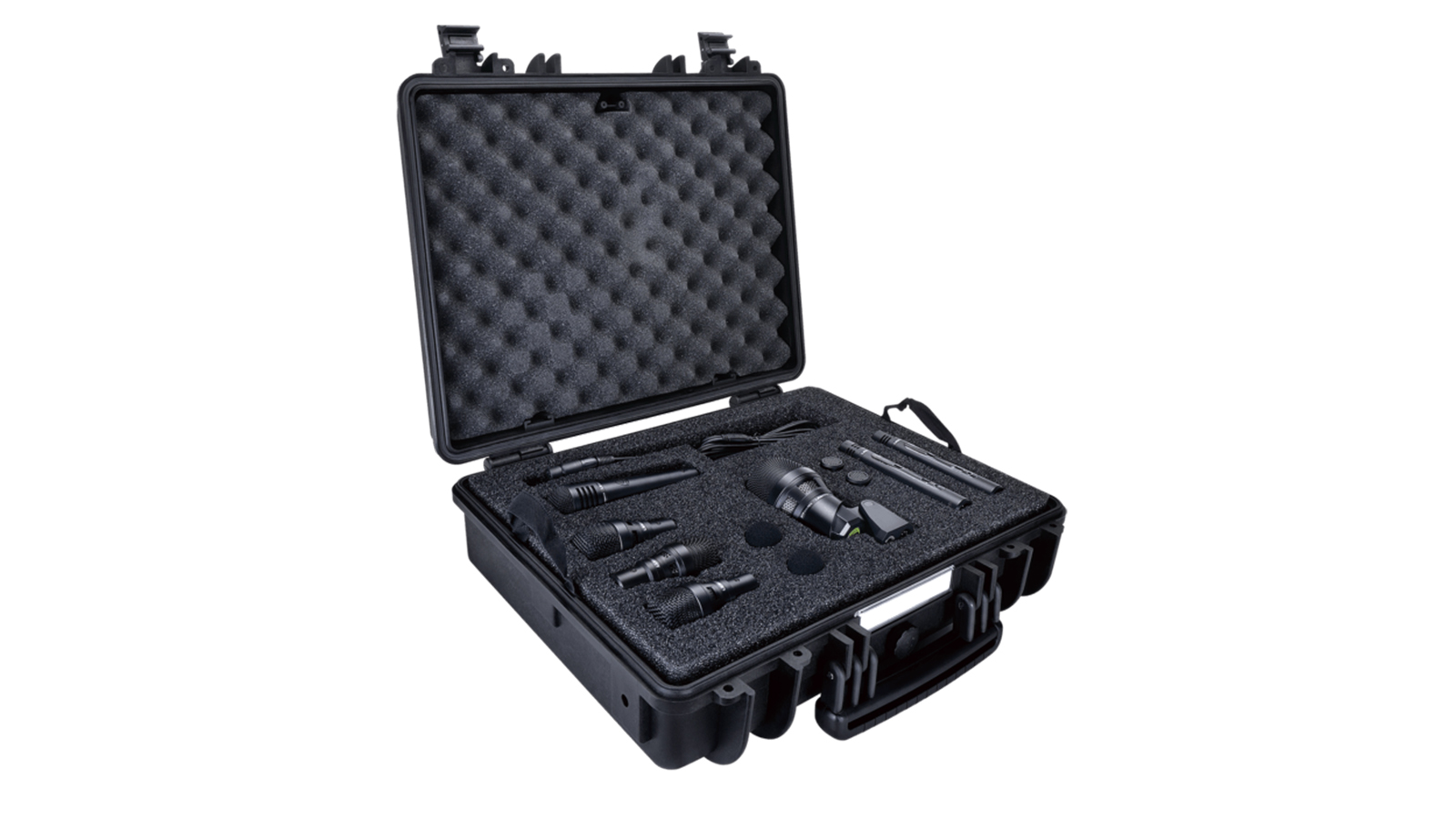
Specifications
Reasons to buy
Reasons to avoid
In recent years, Lewitt has become renowned for making mics that pack in a lot of functionality. One such mic is included in the Beatkit Pro collection. With both condenser and dynamic capsules in one unit, the DTP 640 REX bass drum mic gives you the best of two microphone types simultaneously for maximum attack and body. It also features switchable voicings, enabling you to dial-in your bass drum sound before you even get to the mixer.
Elsewhere in this kit, there are four dynamic mics: an MTP 440 DM for snare drums, and three DTP 340 TTs for toms. Finally, the LCT 340 small diaphragm overheads feature multi-position low-cut filters and attenuation switches. In this top-of-the-range version, you can also swap the standard cardioid capsule for omni-directionals.
The Beatkit Pro gives you heaps of flexibility, with plenty of well thought-out features. If you want options, this set is for you.
Read the full Lewitt Beatkit Pro review
Best for simplicity
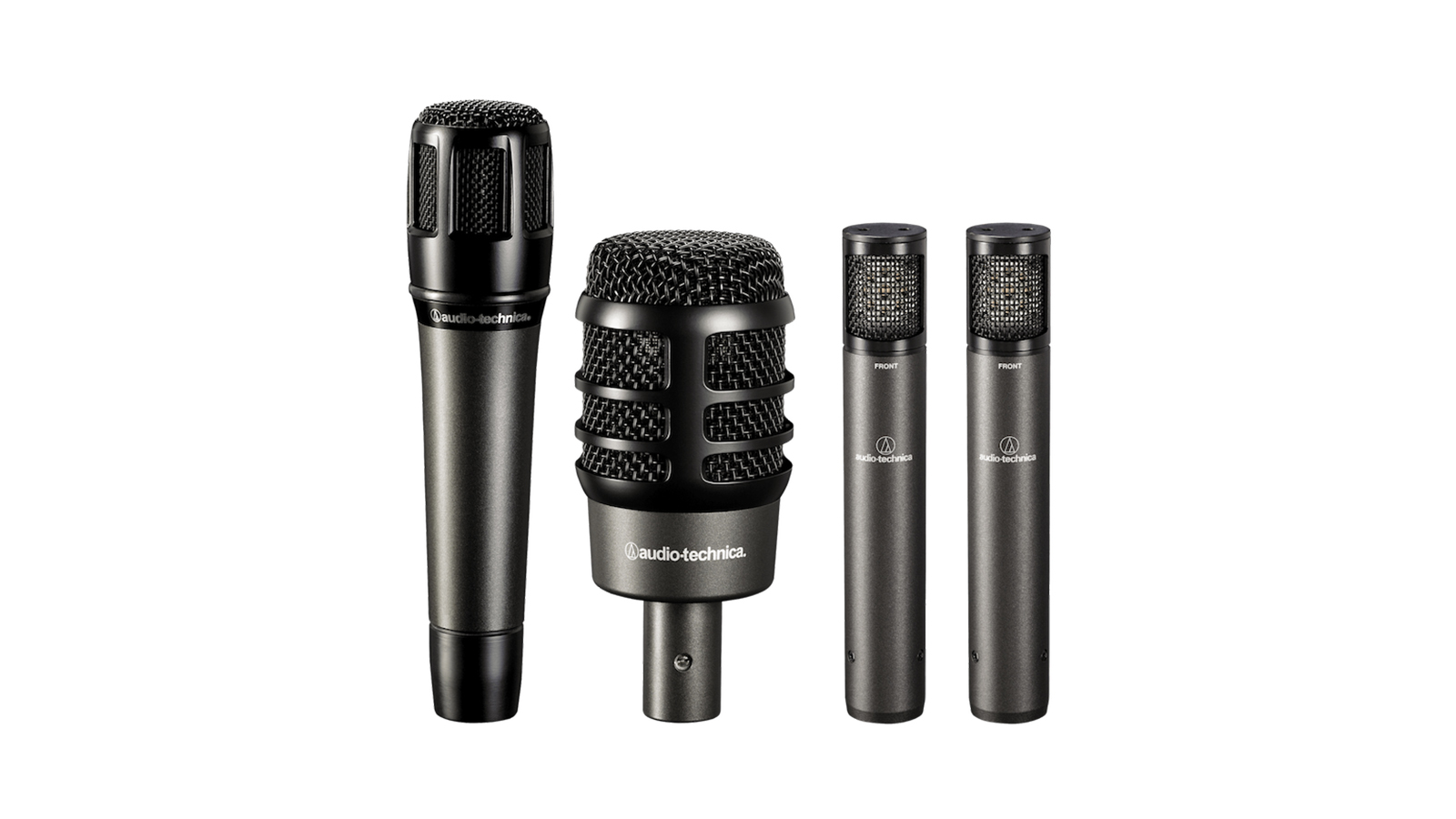
6. Audio-Technica ATM-DRUM4
Our expert review:
Specifications
Reasons to buy
Reasons to avoid
Not everyone wants to close-mic their kit – in a live environment where you need some basic reinforcement, or in the recording studio when you’re going for a more natural sound, a kick, snare and two overhead mics will often be enough.
The Audio-Technica ATM-DRUM4 has you covered with this exact configuration – dynamic mics for your kick and snare, plus two pencil condensers for overheads. The ATM250 is a very popular bass drum mic and, along with the ATM650, offers a hypercardioid polar pattern.
The ATM450 overheads don’t feature any filters or pad switches, but this set will enable you to quickly capture a well-balanced kit sound.
Best for live
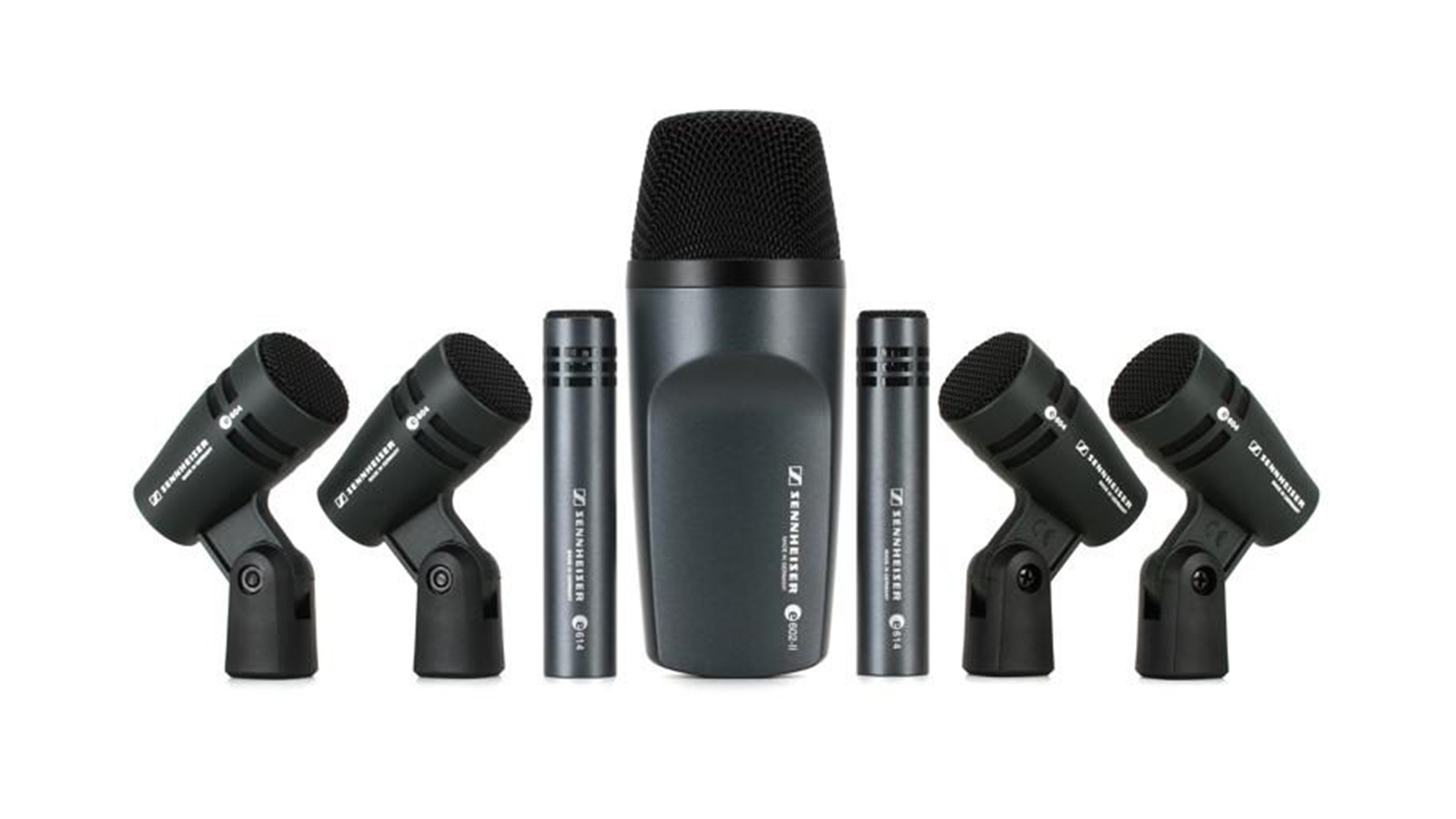
7. Sennheiser Evolution 600 Series
Our expert review:
Specifications
Reasons to buy
Reasons to avoid
If you’ve ever had your kit miked in a live setting, there’s a strong chance you’ll be familiar with Sennheiser’s e 604s. These stubby dynamic mics are a favourite among drummers who want to nail that ‘live’ sound, thanks to their ease of placement around the kit and full frequency response.
The capsules are actually derived from Sennheiser’s much-loved MD 421 dynamic mic: a studio staple for toms. In this pack you get four e 604s for snare and toms, an e 602-II dynamic kick drum mic, plus a pair of e 614 condenser mics.
As with other sets here, Sennheiser has thrown in hoop mounts, and they are some of the quickest and easiest to clip to your drum on the market.
Best close mics
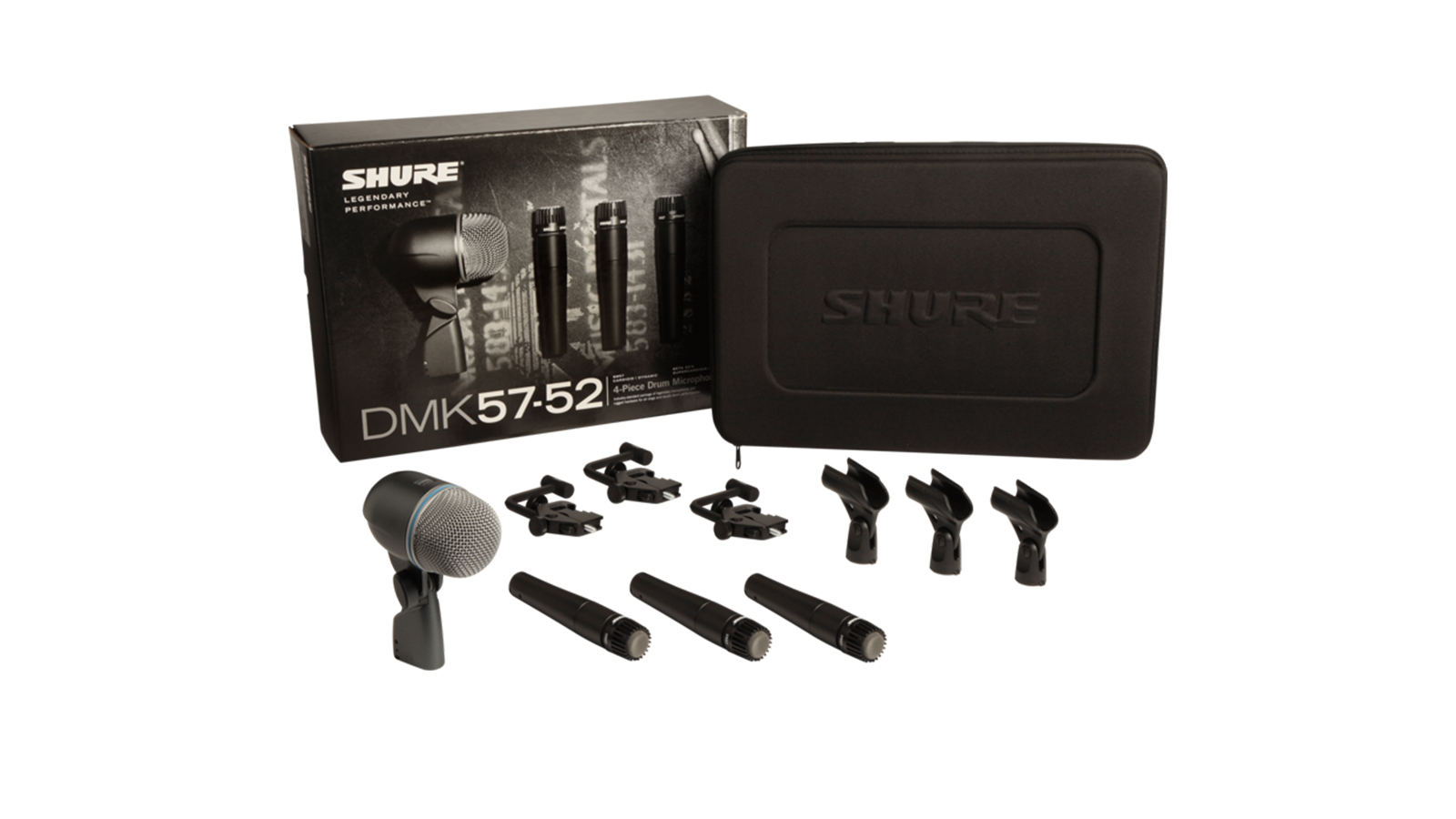
Specifications
Reasons to buy
Reasons to avoid
Want to mic a snare drum? Toms? How about defending yourself from the bass player? The answer is the same: use an SM57. Shure’s DMK57-52 pack is slightly different to some of the others on offer here, in that it doesn’t include overheads. It does, however, comprise three SM57s and Shure’s excellent BETA 52A bass drum mic.
It’s a no-fuss solution for close-miking a four-piece kit, especially if you already have access to additional mics for your overheads. Shure has thrown in A56D hoop mounts for the SM57s, and the BETA 52A has its own clip built in, so you won’t leave it behind.
It’s not a comprehensive package, but it does cover most of your kit with industry-standard mics for less, making it a great choice for live use.
Read the full Shure DMK57-52 review
Buying advice
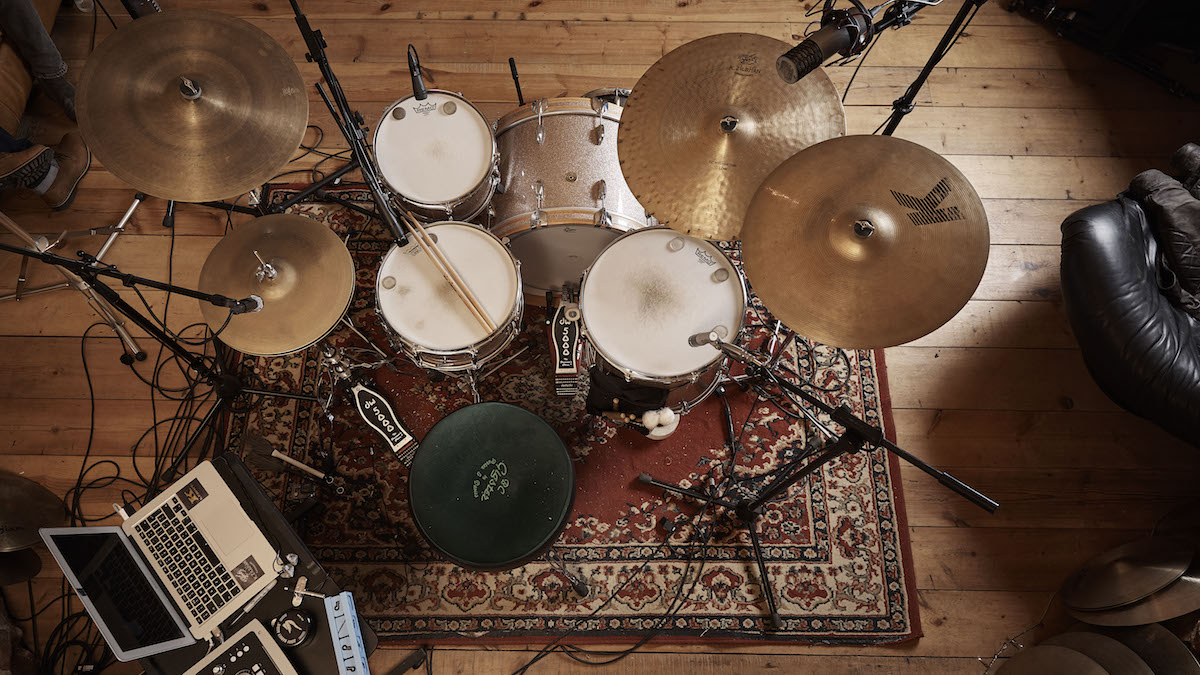
How to choose the best drum mic set for you
MusicRadar's got your back
When it comes to choosing mics for your drum kit, your two most common options will be dynamic or condenser, and many sets will contain a mixture of the two.
Dynamic mics, such as the Shure SM57, are known for their robust physical design, ability to handle high sound pressure levels (SPLs) and simple functionality. All of this makes dynamic mics perfect for close positioning to a drum head. Condenser mics, meanwhile, tend to be more sensitive and are capable of picking up a broader range of frequencies. For this reason, they are most often used as overhead mics to capture the sparkle of the cymbals, as well as the overall kit sound from a slight distance.
It’s worth noting that most condenser mics require phantom power. This is usually provided by the mic preamp you’re plugging into on your mixer or audio interface. Some condenser mic designs use a pre-charged electret capsule, which will keep the mic ticking throughout its lifespan – but this isn’t as common as it used to be.
Microphone pickup patterns explained
You should also familiarise yourself with microphone pickup patterns. These are the directional patterns that mics are capable of ‘hearing’, and will govern how much bleed you experience between your mics (note that complete isolation between mics on a drum kit isn’t possible). The most common pattern is a cardioid, meaning the microphone’s capsule will pick up in a heart shape. However, tighter patterns such as supercardioid and hypercardioid are common when talking about drum mics.
Cable and mounting considerations
Finally, there’s mounting and cables. While all mics come with a standard mic clip mount – either built into the mic’s housing or as a separate accessory – many drum mic sets also include hoop-mounted holders. For the bass drum and overheads, though, you’ll need to buy additional microphone stands. We’d recommend a dedicated short boom for bass drums to enable you to position the mic through the resonant head’s port hole. If you’re opting for large diaphragm overheads, then make sure your stands can stay locked in position with the additional weight! Don’t forget the cables – you’ll need XLR-XLRs for each mic, factoring in additional lengths for the overheads.
How we choose products
Here at MusicRadar, we are experts in our field, with many years of playing, creating and product testing between us. We live and breathe everything music gear related, and we draw on this knowledge and experience of using products in live, recording and rehearsal scenarios when selecting the products for our guides.
When choosing what we believe to be the best drum mic sets available right now, we combine our hands-on experience, user reviews and testimonies and engage in lengthy discussions with our editorial colleagues to reach a consensus about the top products in any given category.
First and foremost, we are musicians, and we want other players to find the right product for them. So we take into careful consideration everything from budget to feature set, ease of use and durability to come up with a list of what we can safely say are the best drum mic sets on the market right now.
Find out more about how we test music gear and services at MusicRadar.
Related buyer's guides
- The best acoustic guitar mics
- Best vocal mics for the studio and stage
- Best cheap microphones: 8 top budget mic options
- Hear yourself loud and clear: The best headphones for drummers
Get the MusicRadar Newsletter
Want all the hottest music and gear news, reviews, deals, features and more, direct to your inbox? Sign up here.

I'm a freelance member of the MusicRadar team, specialising in drum news, interviews and reviews. I formerly edited Rhythm and Total Guitar here in the UK and have been playing drums for more than 25 years (my arms are very tired). When I'm not working on the site, I can be found on my electronic kit at home, or gigging and depping in function bands and the odd original project.